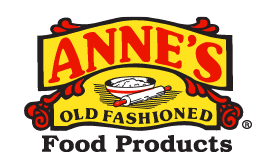Procedure for cooking a 12-13 lb. frozen turkey. If a 19-20 lb. bird is cooked, add 2 hours to time and monitor with thermometer as with the smaller bird. FDA Food Code allows this as well as HCAAP which regulates food manufacturing safety procedures.
You will need a 12-13 lb. frozen turkey, shallow pan, a turkey rack, a probe thermometer, seasoning, and foil.
Cooking a turkey from the frozen state produces an excellent, juicy, tender, and safe product. There is no need to tie up your refrigerator space for 4 days thawing a turkey out ahead of time. Leave it in the freezer until ready to cook it.
When cooking a thawed bird, there is significant risk as the juices often run out into the refrigerator possibly contaminating other foods and there is always the spillage that can occur on countertops and hands. Another benefit for cooking frozen turkey is that the breast meat has greater mass and takes longer to thaw. Therefore the thighs and legs are well cooked and tender and the breast meat is not overcooked and dry.
- Start 5-5 1/2 hrs before you want to serve cooked turkey.
- Set the oven temperature to 325 degrees. It is much better to have the turkey done 30 minutes before mealtime than to rush and serve an undercooked bird.
- Remove the wrap from the turkey and put it on a rack in a shallow pan that has been lined with foil to make cleaning easier. This is where you can season the outside skin of the turkey. This is where I take a tablespoon of my Anne’s Chicken Base and break it down with 1 T of warm water. Then I cover all exposed parts with this with either my hand or a brush and what is left I add a little more water and put it in the pan. Always wash your hands after handling poultry.
- Put the turkey in the warm oven. Do not worry about the bag with the heart, liver, and gizzard in the neck cavity or the neck tucked away in the center of the turkey. They can be removed after the turkey thaws. There will be salmonella and camplylobacter jejuni on the bird, however because it is frozen, there is no drip and transfer to hands or counter and is not a significant risk.
- Cooking the turkey on a rack assures even cooking. Cooking in a pan with sides shields the bottom of the turkey from heat and therefore cooking on the bottom will be non-uniform.
- In the first 2 hours, the legs and thighs get up to approximately 100 degrees. The breast about 1 inch into the flesh is still at the soft ice point. Now begin to monitor the breast temperature with a tip sensitive thermometer-probe type. Insert into the breast because it is the slowest cooking part when cooking from a frozen state.
- At about 3 1/2 hours the legs and thighs will be around 150-160 degrees and the breast 40-50 degrees. The bag with the giblets as well as the neck can now be removed and put in a saucepan to finish cooking with added water to make stock for gravy.
- At 4 1/2-5 hours the turkey should be nicely cooked. Check the temperature. The legs and thighs should be tender and at 175-185 degrees and the breast meat 160-170 degrees. If the turkey had a pop up timer it should be popped.
Stuffing: The turkey can be stuffed when the giblet bag is removed, but be careful and wear gloves, as the turkey is hot. Do not overstuff the bird and remove all of the stuffing when the bird is cooked. The temperature of the stuffing should be 165 degrees in the middle. I personally would heat up my stuffing before putting it in the bird.
It is ok to hold a cooked bird that is done ahead of time as long as it is kept at 130 degrees and if it goes below 130 degrees, it still has a very safe 4 hours before there is any risk at all.
REMINDER: To assure a tasty and safe turkey, monitor the turkey with a tip sensitive thermometer and always wash your hands when handling the turkey, even after cooked.




